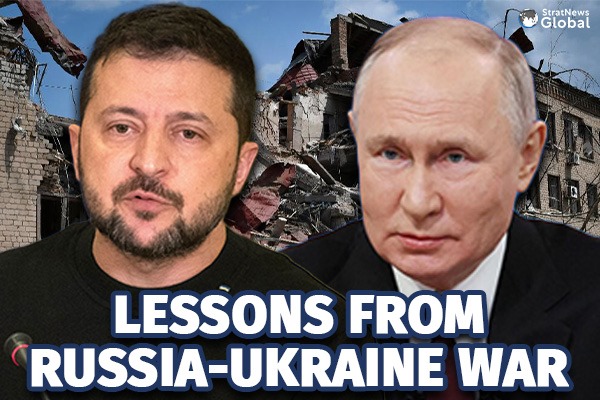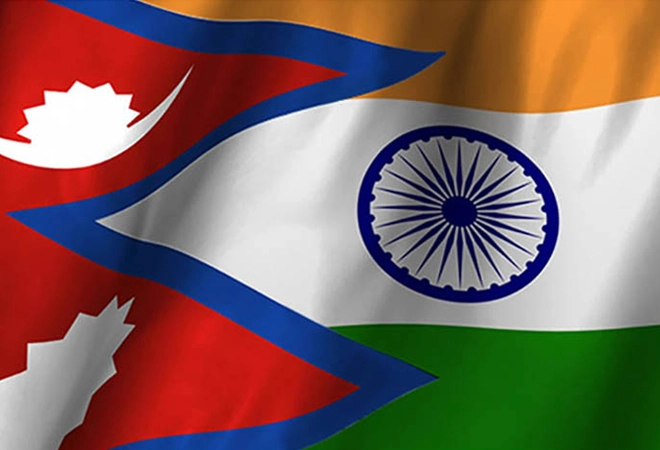Russia’s “Special Operation” in Ukraine has now completed two years. How long it will continue may have much to do with the mood in Washington DC, where President Biden’s $60 billion aid bill for Kyiv is stuck in the House. The Republicans are against any further funding, evident in Donald Trump’s warning that he could “end the conflict in a day”, if he becomes president. It reflects the view among a section of the American public, who appear tired of what they see as never-ending aid to a country that does not impinge on US national security.
Add to that war fatigue in Europe. A recent poll suggested only 10% of Europeans believe Ukraine can defeat Russia. Clearly, their optimism of a year ago that Ukraine could win, seems to be eroding.
The conflict has provided some key military and geopolitical learnings for everyone. On the military front, long-held beliefs of how wars would be fought have been shattered. The other belief, that political protest through social media, the internet, and high casualty rates would serve as an effective deterrent to war, has also been broken as both Presidents Zelenskyy and Putin see no reason to stop fighting. Of course, if Trump wins this November and withdraws funding and Europe is not willing to fill in, the war may be over well before 2024 ends.
On the geopolitical side, Ukraine has shown the limits of US military and economic aid which in the past deterred conflicts. It has also turned the spotlight on India, which while remaining a friend of the West, has been a major buyer of discounted Russian oil that it has refined and sold to Europe. India’s role may carry over into other theatres such as Gaza.
Finally, and most importantly, the Ukraine conflict has shown that war is a reality we must now deal with. It has given a hard knock to Pax-Americana, when a major war was seen as not likely, either in the Western hemisphere or elsewhere.
Military Learnings
The biggest surprise from a military perspective is how battlefield strategies in this war have gone back to the days of WWII. In an era where short swift wars dominated by air power and technology were believed to be the norm, the Russia-Ukraine conflict has gone back to the kind of fighting WWII generals would certainly be comfortable with. Trench warfare, minefield clearance, breaking through fortified defences reminiscent of the German “Blitzkreig” tactics, are back.
But Ukraine faces a real problem. The Washington Post reported that former Ukrainian military chief General Valery Zaluzhny, replaced recently by his president, had warned him that if his army was to continue fighting, 500,000 more troops were urgently required. Although Zaluzhny lost his job, Ukraine’s lawmakers have proposed legislation that would reduce the conscription age from 27 to 25. Whether this would bring the army anywhere near the 500,000 mark is not clear.
The second learning has been the acceptance of large numbers of casualties. In a social media era where “short sharp wars” were believed to be the norm as people would not tolerate a high casualty rate, the seeming willingness of both Russia and Ukraine to sustain thousands of casualties has been a wake-up call for the world. According to a US intelligence report released in December last year, Moscow has “315,000 dead and injured troops or nearly 90% of the personnel it had since the conflict began.”
Ukraine has kept its casualty rate secret to boost morale, but Western military experts believe that over 500,000 troops have died since the war began.
The third military learning is the gap between what Ukraine needs to fight and what it gets. Case in point: a CNN report quoted US government statistics to show that Washington has provided $113 billion in military and non-military aid to Ukraine. This has largely comprised howitzers, Abrams tanks and Bradley infantry fighting vehicles. But what Ukraine needs is artillery, and it lacks a home-grown defence industry that can produce artillery.
The use of drones and missiles have been game-changers. Ukraine’s use of cheap drones has thwarted Russia’s air attacks but a new report by the British military think-tank RUSI, says Kiev is losing an incredible 10,000 drones a month. From Russia’s side, the big surprise has been the effectiveness of Iranian and North Korean weaponry on the battlefield, which has provided an uncomfortable lesson for the West: sanctions do not cripple a country’s military effectiveness.
Geopolitics
On the geopolitical spectrum, there is much to think about – the relative failure of the US to make a key difference to the Ukraine conflict. American and European military aid to Ukraine has propped up the country, yes, and allowed it to make some serious tactical gains against Russia in the first phase of the war but these have not been enough to make a difference. Washington’s use of sanctions, cutting Russia out of the Swift system, and denying access to the US dollar, has not worked, rather it has had the reverse effect.
Across India, the Arab states, and Africa, there is alarm over the US “weaponizing” the dollar and while
“de-dollarisation” is not yet a reality, the idea of dealing in regional currencies has gained ground. India has used the rupee-rouble route and third countries like the UAE are believed to have been used to make payments for Russian oil. Russia’s economy continues to grow and there is no visible indication of widespread dissent or discontent among the Russian public over the war.
The Ukraine war may have helped anchor India more firmly at the centre of the global order. India’s refusal to heed Western dictates to stop buying Russian oil has been a major concern since it undermined the sanctions regime. But Europe also saw fit to buy refined oil products from India when they knew it was derived from Russian crude.
This is something that is not likely to change regardless of whether Russia or a Western-backed Ukraine wins the conflict. India’s role as a rising global economic power, its ability to be a friend to all sides, will be useful not just post the Russia-Ukraine conflict but also in Gaza once the fighting there settles down. This was underscored at the G-20 summit in New Delhi last year.
Western Limitations
The West is also realizing its limits. Its strategy in Ukraine has not worked. China is increasingly unlikely to cooperate with the West on any major issue in the near future. This enlarges India’s room for manoeuvre. As External Affairs Minister Jaishankar remarked recently, “If I’m smart enough to have multiple options you should be admiring me.”
President Putin has reason to be optimistic. The US deadlock in Congress may be resolved but Washington is also diverted by Israel’s war in Gaza. Putin’s interview with right-wing media anchor Tucker Carlson, where he chastised the US for getting involved in the Ukraine war (“Don’t you have anything better to do?”) and the recent fall of Avdiivka with the withdrawal of Ukrainian forces, is a key strategic victory that he can sell to the Russian public. Zelenskyy’s recent suggestion to Donald Trump that he come and see the situation in his country, suggests a certain desperation. Could that lead to a ceasefire and a negotiated end to the “Special Operation” is hard to tell.

















